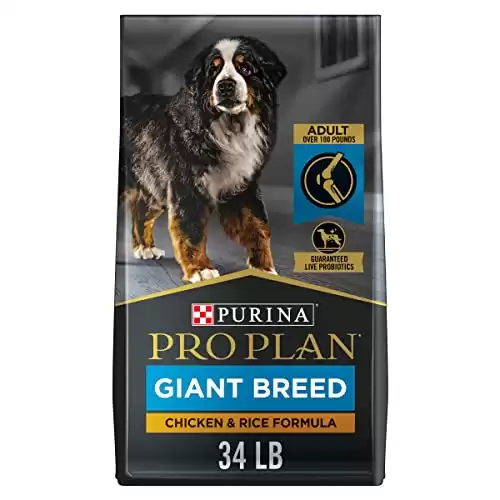Labradane
Canis lupus
Labradanes can come with both sold-color coats and the more exciting patterns that you typically see on Great Danes.
Advertisement
Labradane Facts
Labradane Physical Characteristics
Labradane as a Pet:
- General Health
- Energy Level
- Shedability
- Trainability
- Intelligence
- Tendency to Chew
- Size
- Family and kid friendliness
- Yappiness / Barking
- Low
- Hypoallergenic
- Yes
- Separation Anxiety
- Moderate
- Preferred Temperature
- Average climate
- Exercise Needs
- High
- Friendly With Other Dogs
- Moderate
- Pure bred cost to own
- $800
- Dog group
- Sporting
- Male weight
- 100-190 lbs
- Female weight
- 90-170 lbs
This post may contain affiliate links to our partners like Chewy, Amazon, and others. Purchasing through these helps us further the A-Z Animals mission to educate about the world's species.
View all of the Labradane images!
Labradanes aren’t recognized as an official breed.
They are listed in the designer dog registry. Breeders currently suspect that these pups were first created in the 1980s in response to the rising trend of labrador hybrids.
See all of our expert product reviews.
Labradanes are designer dogs that are bred by mixing a Great Dane with a Labrador Retriever. The result is a tall dog with sleek brown fur, big ears, and a contemplative but affectionate personality. The labradane isn’t one of the most common dogs up for adoption, but this hybrid is still well worth making a part of your family.
In general, labradanes are sweet, shy, and playful. Expect one of these dogs to enjoy the sights and sounds of life while sticking right by their owner’s side.
Origin Of The Breed
The labradane came about for two reasons – health reasons and a trend. During the 1980s, designer and smaller dogs were thought of as trendy, and due to rising demands, multiple breeds were crossed to obtain smaller versions. To create a healthier version of a purebred dog, breeders would combine two purebreds, hoping that the resulting offspring would be even better. The labradane is a result of this
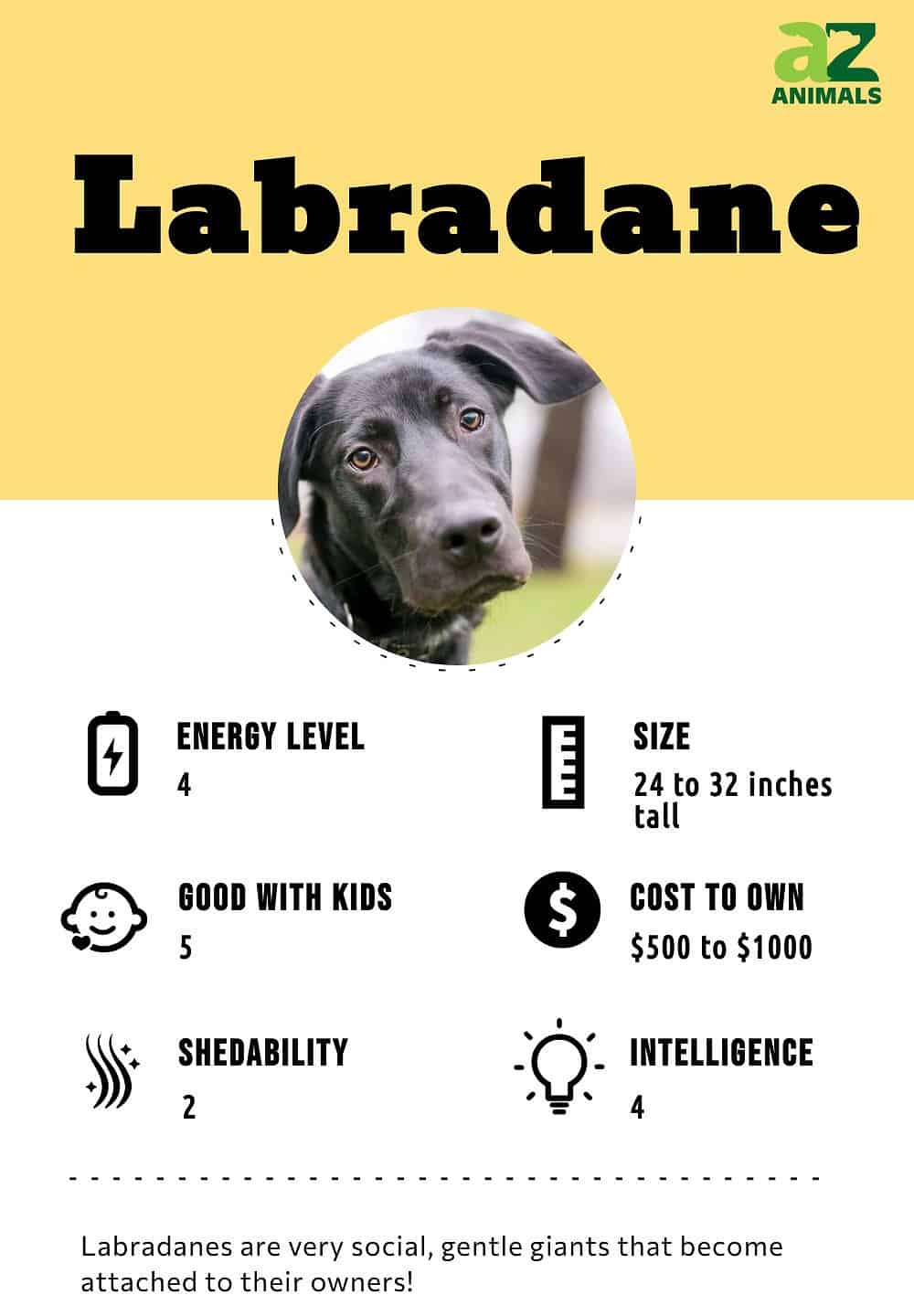
3 Pros And Cons Of Owning A Labradane
| Pros! | Cons! |
| Sweet personality: They are shy but friendly dogs that are extremely attached to their owners and enjoy quietly attending family events. | Big bones: They have large frames and may be prone to health issues like inflammation or joint dysplasia. |
| Great with kids: The unique personality of this breed makes them a great choice as family dogs, especially around older children who want a playful pet that doesn’t require all of their attention. | Separation anxiety: They love their parents and need a steady stream of attention to stay happy. Luckily, your labradane will be happy to quietly sit next to you while you work. |
| Low grooming: They have short coats of fur and shed so little that they’re considered to be hypoallergenic. | Low confidence: Because of their large size, many Great Dane dogs suffer from confidence issues. This can be improved by spending more time with your dog and helping them have successful training sessions. |
Size And Weight
Labradanes are very large dogs with long legs, big ears, and short coats of brown, black, or tan fur. Most labradanes weigh anywhere from 100 to 190 pounds, and they can stand up to 32 inches tall. Female labradanes are usually smaller than their male counterparts from the same litter. However, as with all designer dog breeds, there can be a significant variance in physical traits between individual pups. Labradanes that are more like their Great Dane parents will be taller and more introspective, while labradanes that are like their labrador retriever parents will have stockier torsos, fluffier fur, and more gregarious personalities.
| Height (Male): | 25 to 32 inches |
| Height (Female): | 24 to 30 inches |
| Weight (Male): | 100 to 190 pounds |
| Weight (Female): | 90 to 170 pounds |
Common Health Issues
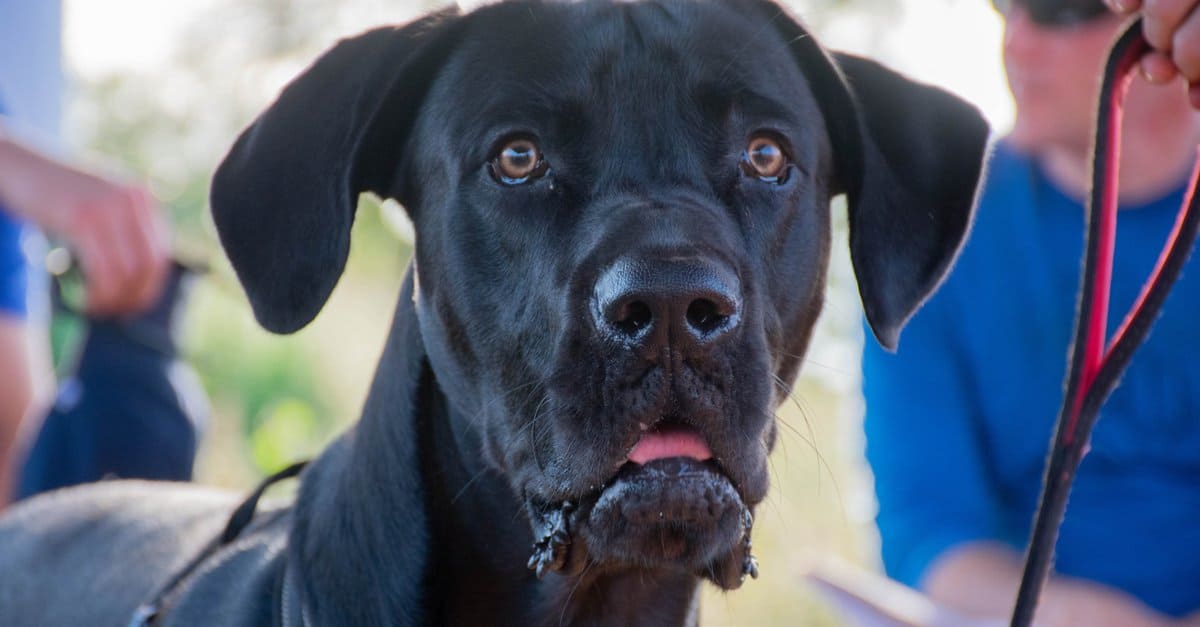
Labradanes have large frames and may be prone to health issues like inflammation or joint dysplasia.
Health and Entertainment for your Labradane
See all of our expert product reviews.
©AWhit/Shutterstock.com
Labradanes are prone to health issues related to their Great Dane genetics. In particular, these dogs have a chance of suffering from joint dysplasia, back problems, and stomach bloating. As with all large-eared dogs, labradanes are at risk for infections and need their ears cleaned on a regular basis. Finally, Labradanes occasionally experience panosteitis, which is a condition in which one of your puppy’s leg bones becomes inflamed during a growth spurt. Vets can treat this condition easily, but your puppy will suffer pain until they give him an anti-inflammatory. In general, the health conditions that labradane owners need to worry about include:
- Joint dysplasia
- Ear infections
- Panosteitis
- Bloating
- Back problems
Temperament
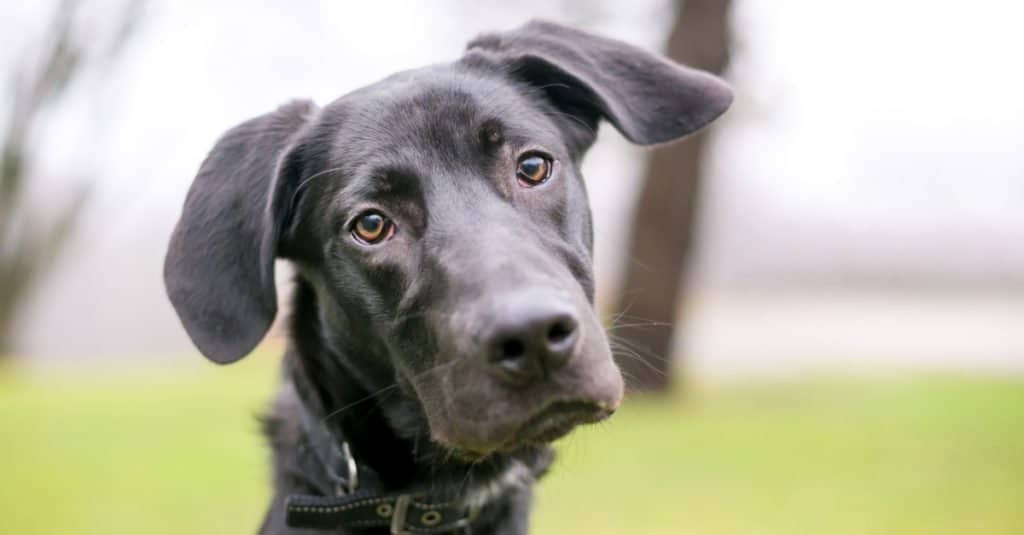
The unique personality of labradanes makes them a great choice as family dogs, especially around older children who want a playful pet that doesn’t require all of their attention.
©Mary Swift/Shutterstock.com
Labradanes are sweet, loving, friendly, and shy dogs that are incredibly attached to their owners. These pups have cautious personalities that are inherited from their Great Dane parents; the larger your pet gets, the more careful he will be to compensate for his size. However, because this hybrid includes the gregarious Labrador Retriever, you can expect to see friendly, playful, and even relaxed traits that you wouldn’t normally find in a Great Dane after they are fully grown.
The particular personality mix attributed to the labradane creates a dog that is thoughtful and easy to train. These dogs love guidance from their owners, so don’t be afraid to teach yours as many commands and traits as they have the attention span to maintain.
How To Take Care Of A Labradane
Taking good care of your labradane will improve their life expectancy and reduce their separation anxiety. These dogs like to be accommodating, but that doesn’t mean they don’t need regular care and affection.
The Best Dog Food For Labradanes
Labradanes are large dogs that need to burn a lot of calories. Expect your labradane to eat two to three large meals every day, especially if they are getting the exercise they need. Choose a protein-focused kibble that’s designed for large dogs and cares for their bones and joints since they can break down under all that dog. Alternatively, feed your dog a diet that includes cooked meat, green vegetables, and whole grains.
A-Z Animals says the best dog food option for Labradanes is Purina Pro Plan Large Breed & Giant Breed Chicken & Rice Adult Dry Dog Food & Wet Dog Food.
Most importantly, your Labradane will get ample glucosamine, EPA, and omega-3 fatty acid for stable joints and to control inflammation related to panosteitis. Plus, folic acid helps your Labradane metabolize amino acids for overall health. With real chicken as the first ingredient, there’s plenty of protein and calcium to nourish your dog’s oversized body from head to toe.
Get Purina Pro Plan for Large and Giant Breeds on Amazon.
- Chicken & Rice dry kibble dog food for large breeds
- Contains Glucosamine and EPA for joint health
- Live probiotics for digestive and immune health
- 34lb bag
Maintenance and Grooming
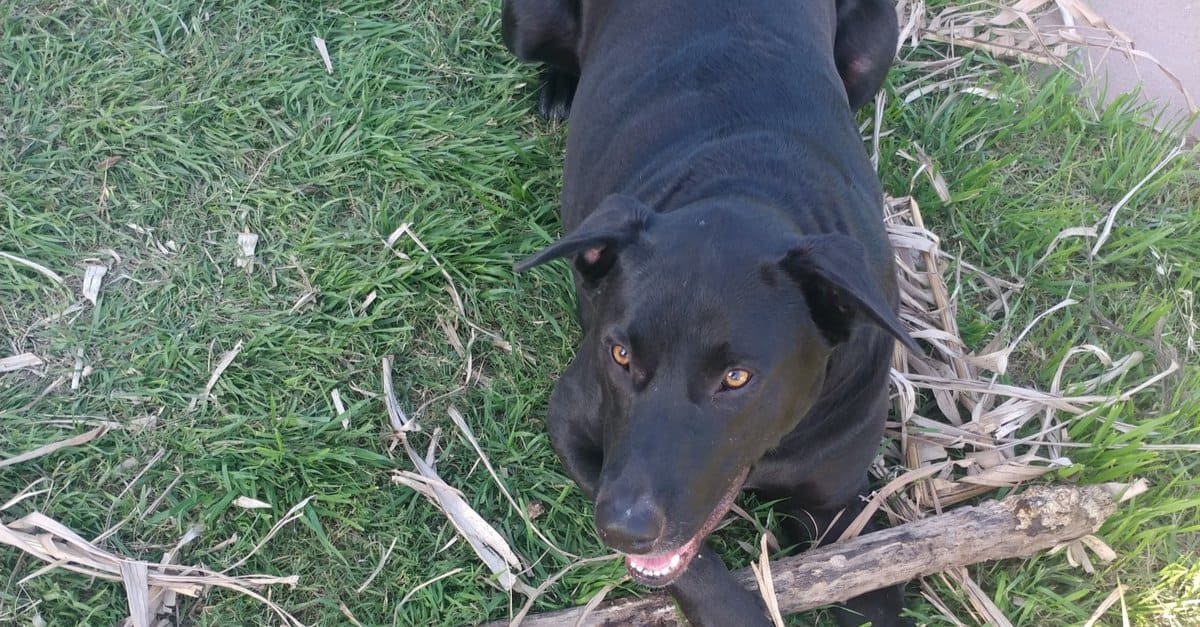
Labradanes ears should be checked regularly for signs of infection.
©suzdougl36/Shutterstock.com
Labradanes have short coats that don’t require regular brushing. To prevent shedding, wipe your dog down with a warm towel at least twice a week. Your main concern as an owner should be whether your dog’s ears develop an infection. Check at least once a week, and look for signs of redness, swelling, or sensitivity. Consult your vet to determine a good ear-cleaning regimen that works for your dog’s unique needs.
Training
Labradanes are smart dogs that look to their owners for answers. Because of this, most labradane puppies are easy to train, especially if you’re willing to conduct short sessions that don’t stress their attention spans. Start training early, and focus on simple commands that will help your soon-to-be-large dog navigate their environment. Once they have the basics down, continue working with your labradane to improve their confidence and help them develop a family-friendly personality.
Exercise
Labradanes are large dogs that need high-level activity, especially while they are still puppies in any sense. However, as your dog gets older, he may start developing joint problems that hinder his ability to exercise without hurting himself. You can reduce the impact of this problem by making sure that your dog isn’t overweight. It’s also a good idea to play more and go for extra walks while your dog is younger, as they may not be able to move so freely when they are older.
Labradane Puppies
Labradane puppies are much smaller than their parents, to the point where they might even be confused with another type of labrador mix at an adoption center. Your puppy will get bigger quickly; while he’s small, try to give him fun experiences like getting carried around. Remember that these large dogs can still be fragile. In particular, Great Danes and their descendants are at risk for leg and joint problems while they’re still growing up. Take your labradane to the vet regularly to make sure they’re in peak physical condition.
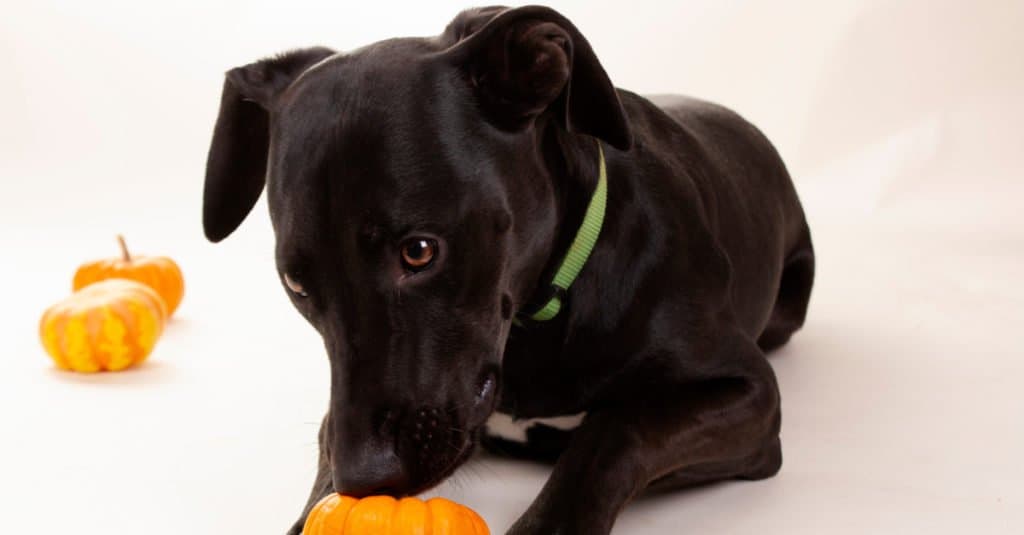
Labradanes love their parents and need a steady stream of attention to stay happy. Luckily, your labradane will be happy to quietly sit next to you while you work.
©Cat Hammond/Shutterstock.com
Labradanes And Children
Labradanes have the sweetness of a Great Dane mixed with the easygoing temperament of a Labrador Retriever. The combination of these two traits makes labradanes a great choice as family pets, especially for older kids. A young labradane will want to run and play, while an old labradane will enjoy sitting under the table and listening to the family conversation. Although these dogs are very gentle, it’s still not a good idea to leave them alone with small children – especially because they have such shy and sensitive personalities.
Dogs Similar To Labradanes
Labradanes are large dogs with sweet and shy personalities. If you’re looking for something similar, try the classic Great Dane or one of the larger Doodle hybrids.
- Great Dane: The Great Dane is a classic breed with a distinctive stature. These dogs are loving, loyal, and warmhearted.
- Great Danoodle: As sweet as their Great Dane parents, Great Danoodles are hypoallergenic and make great family pets.
- Saint Berdoodle: The Saint Berdoodle is a large, hypoallergenic dog with an exceptional temperament. Saint Berdoodles like to have big yards, but in exchange, they make great guard dogs.
Popular Names For Labradanes
Labradanes like names that are friendly without being too cutesy, and they especially prefer names that boost their confidence. Popular names for labradanes include:
- Harley
- Avery
- Harper
- Cody
- Roxy
- Jackson
- Ranger
- Sandy
- Scout
- Hunter
- Frankie
- Dakota
Labradane FAQs (Frequently Asked Questions)
What is a labradane?
A labradane is a hybrid between a Great Dane and a labrador retriever. These dogs are have long, tall statures with sleek coats of brown, black, or tan fur.
How much do labradanes cost to own?
The average labradane costs anywhere between $500 and $1,000, with the average price sitting around $800. Getting a labradane with good genetics is important, so make sure to ask the breeder for adoption information about each of the parents. In particular, a healthy Great Dane parent will ensure that your dog is even-tempered and comfortable in its own skin.
Are labradanes good family dogs?
Labradanes have a personality that is friendly and loving while still being cautious and reserved. Because of this, they actually interact surprisingly well with kids, especially if the children are older and know how to respect canine boundaries. Keep in mind that labradanes are very large dogs that can get socially tired quite easily. You’ll have the best results if you monitor new situations and give your dog a break before they exhibit any negative behavior.
How long do labradanes live?
The life expectancy of most labradanes is 8 to 13 years old. Expect your labradane’s life expectancy to be a few years longer if they are smaller or have inherited more of their labrador parent’s genetic.
Do labradanes shed?
Labradanes are short-haired dogs that don’t shed heavily. However, a labradane will still leave some dog fur around your house, especially if they take after their labrador parent. Luckily, dander levels remain low enough for these dogs to be considered hypoallergenic.
How big do labradanes get?
Labradanes are large-sized dogs that can weigh anywhere from 90 to 190 pounds. These dogs usually stand between 24 to 32 inches tall, with most of the height coming from their legs. Expect labradanes to have stockier frames than classic Great Danes.
Thank you for reading! Have some feedback for us? Contact the AZ Animals editorial team.
Sources
- dogtime.com / Published March 21, 2021
- petguide.com / Published March 21, 2021
- wagwalking.com / Published March 21, 2021
- doggiedesigner.com / Published March 21, 2021






